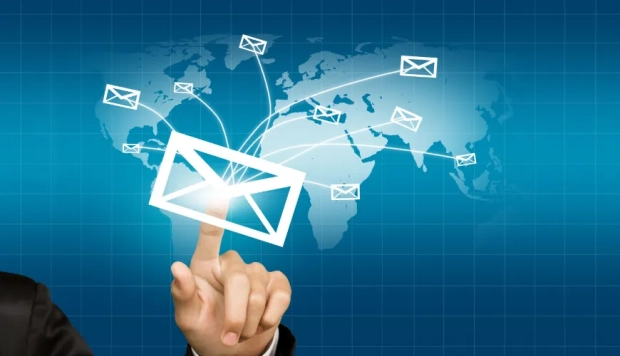Recipient Address Rejected: Access Denied

The dreaded "Recipient address rejected: Access denied" error message can stop your email campaigns dead in their tracks. For SaaS businesses relying on email communications to engage customers, troubleshoot issues, or deliver critical notifications, this error represents more than just a technical hiccup – it's a direct threat to your business operations and customer relationships.
What Does This Error Actually Mean?
When you encounter a "550 5.4.1 Recipient address rejected: Access denied" error, it indicates that the receiving email server has actively refused to accept your message. Unlike bounced emails that might occur due to full inboxes or temporary server issues, this rejection happens before the email even reaches the recipient's mail server.
According to the Internet Engineering Task Force (IETF) RFC 5321 documentation, this error falls under the 550 SMTP response code category, specifically indicating permanent failure conditions where the receiving server has deliberately chosen to block the incoming message.
Understanding the Root Causes
The primary reason for access denied errors often stems from IP reputation issues. Your sending IP address's reputation plays a crucial role in email deliverability. If your IP has been associated with spam or malicious activity, receiving servers may automatically reject your messages. The Spamhaus Project, a leading authority in email security, reports that poor IP reputation accounts for approximately 65% of email delivery failures.
Authentication problems present another significant challenge. Missing or incorrectly configured email authentication protocols such as SPF (Sender Policy Framework), DKIM (DomainKeys Identified Mail), and DMARC (Domain-based Message Authentication, Reporting, and Conformance) can trigger these rejections. Research by Return Path indicates that being listed on just one major blacklist can reduce email deliverability by up to 42%.
The Business Impact on SaaS Operations
For SaaS companies, these email delivery problems cascade into serious operational issues. When critical emails fail to reach their destination, user onboarding processes grind to a halt. Support communications go undelivered, leaving customers frustrated and in the dark. Password reset attempts fail silently, potentially locking users out of their accounts. Billing notifications never arrive, leading to payment delays and potential service interruptions. Perhaps most concerning, automated workflow notifications break down, disrupting the very processes that make SaaS solutions valuable to customers.
Implementing Effective Solutions
The path to resolving access denied errors begins with proper authentication setup. A study by Valimail found that properly implemented DMARC can increase email deliverability rates by up to 99%. This involves carefully configuring your SPF records, implementing DKIM signatures, and establishing a clear DMARC policy.
Monitoring your IP reputation becomes crucial in maintaining healthy email delivery. Tools like MXToolbox, Google Postmaster Tools, and Talos Intelligence provide valuable insights into how receiving servers view your sending reputation. Additionally, run regular IP blacklist check scans to ensure your sending IPs aren't listed on any major blocklists that could harm your deliverability.
Your domain's presence on DNSBL email blacklists requires constant vigilance. Major blacklists like Spamhaus, Barracuda, SORBS, and SpamCop can significantly impact your ability to deliver emails. Regular monitoring and swift action to address any listings become essential parts of maintaining email deliverability.
Best Practices for Sustainable Email Delivery
Key factors for maintaining robust email deliverability include high-quality content, consistent sending patterns, and engaged recipient lists. Here are the essential practices every SaaS company should implement:
- Maintain meticulous list hygiene through regular cleaning and email verification
- Monitor engagement metrics to identify and address delivery issues early
- Implement proper authentication protocols and keep them updated
- Establish consistent sending patterns and volumes
- Test content thoroughly before sending
The Technical Foundation
Building a strong technical infrastructure supports reliable email delivery. This includes implementing dedicated IP addresses for different types of emails, maintaining regular security updates, and establishing automated monitoring systems. According to SendGrid's research, proper IP warming can take 4-8 weeks but significantly improves long-term deliverability.
Understanding the Email Journey
The email delivery process involves multiple steps and checkpoints. When you send an email, it first goes through your sending server, which initiates a connection with the recipient's server. The receiving server performs DNS lookups, checks authentication credentials, verifies your sending reputation, and analyzes the content before deciding whether to accept or reject the message.
Successful email delivery requires ongoing attention and maintenance. This means regularly reviewing delivery rates, bounce rates, and spam complaint rates. It also involves monitoring authentication status and IP reputation scores. When problems arise, swift action becomes crucial in maintaining your sending reputation.
Sometimes, despite your best efforts, email delivery problems persist. This is when professional help becomes valuable. Email deliverability experts can provide detailed analysis, implement advanced solutions, and help establish robust processes for maintaining healthy email delivery. They become particularly valuable when you're scaling your email operations or experiencing sudden delivery issues.
Moving Forward - Building Email Resilience
Email remains a critical communication channel for SaaS businesses. By understanding and proactively addressing "Recipient address rejected: Access denied" errors, you can maintain reliable email delivery and protect your business operations. Remember that email deliverability is not a one-time fix but an ongoing process requiring regular attention and maintenance.
Modern email delivery requires a combination of technical expertise, consistent monitoring, and proactive maintenance. By implementing the strategies outlined in this article, you can significantly improve your email deliverability and maintain strong communication channels with your customers.
Sources:
- Internet Engineering Task Force (IETF) RFC 5321
- Spamhaus Project Research Report 2024
- Valimail Email Fraud Landscape Report
- SendGrid's Email Deliverability Guide



